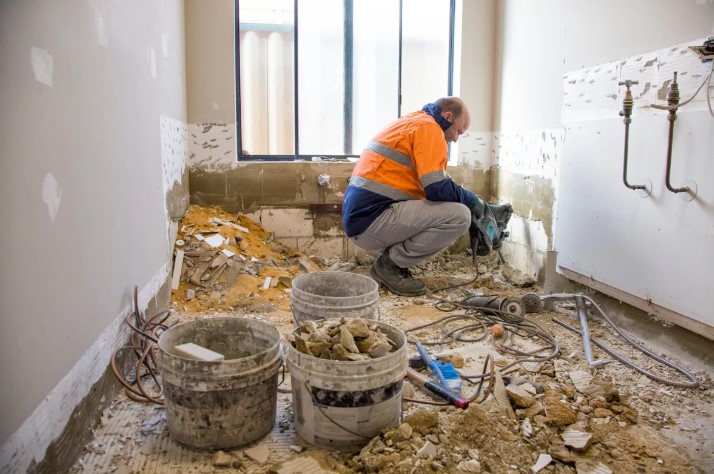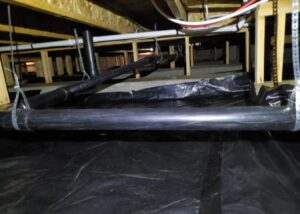Best Home Improvement Loans of April 2023

What is a home improvement loan?
A home improvement loan is an unsecured personal loan that you use to cover the costs of upgrades or repairs. Lenders provide these loans for up to $100,000. A home improvement loan comes in a lump sum, and you repay it in monthly installments, usually over two to 12 years.
How do home improvement loans work?
Unlike with home equity financing, home improvement loans do not require collateral. Whether you qualify and the loan’s interest rate are based on information like your credit and income. If you can’t repay a home improvement loan, your credit will take a hit.
Home improvement loans vs. equity financing
A home improvement loan makes sense if you don’t have enough equity in the home or don’t want to use it as collateral. Equity is your home’s value minus what you owe.
If you have equity, you could get a lower monthly payment on a home equity loan or line of credit.
Home equity loan
Home equity loans come in lump sums and have fixed interest rates, so monthly payments never change. You repay this loan in monthly installments on a term of up to 15 years.
Compare to personal loans: Home equity loans work similarly to personal loans, but they often have lower rates and longer repayment terms.
Home equity line of credit
A HELOC is an open credit line that you draw on as needed during a renovation and pay interest only on what you borrow. This variable-rate option works best if you don’t mind a fluctuating monthly payment and need more borrowing flexibility.
Compare to personal loans: A HELOC lets you borrow at any time over a period of about 10 years, which can be ideal for long-term projects or unexpected expenses. A personal loan offers a one-time cash influx.
Home improvement loan pros and cons
Here are the pros and cons of using personal loans for home improvement projects:
Pros
-
Payments are fixed. Personal loans have fixed monthly payments, so you can reliably budget for them.
-
Funding is fast. Online applications typically take a few minutes, and funds are often available within a day or two, while funds from a HELOC or home equity loan can take a few weeks to become available.
-
No collateral required. Unlike an auto or home loan, unsecured personal loans don’t require collateral, so the lender can’t take your possessions if you don’t make the payments.
Cons
-
They can have high rates. Because the loan is unsecured, the interest rate may be higher than on a home equity loan or home equity line of credit, which typically have single-digit rates.
-
No tax benefits. You can’t claim a tax deduction on the interest on personal loans as you might be able to do with mortgage interest.
How to compare home improvement loans
Shop around and pre-qualify to find the right loan for your project. Here are important features to compare among home improvement loans:
-
Annual percentage rate: APRs represent the entire cost of the loan, including fees the lender may charge. If you’re a member of a credit union, that may be the best place to start. The maximum APR at federal credit unions is 18{3ad958c56c0e590d654b93674c26d25962f6afed4cc4b42be9279a39dd5a6531}.
-
Monthly payment: Even if you get a low rate, be sure the monthly payments fit into your budget. Use a home improvement loan calculator to see what loan amount, rate and repayment term you need to get an affordable monthly payment.
-
Loan amount: Some lenders cap amounts at $35,000 or $40,000. If you think your project will cost more than that, look for a lender that offers higher loan amounts.
-
Loan term: A loan with a long repayment term may have low monthly payments, but you’ll pay more interest over the life of that loan than one with a shorter repayment term.
-
Ability to add a co-signer or co-borrower: Some lenders let you add a co-signer or co-borrower to your application. Adding someone with better credit or higher income to the loan application may help reduce your APR or increase the amount you can borrow.
Home improvement loan rates
Home improvement loan rates are 6{3ad958c56c0e590d654b93674c26d25962f6afed4cc4b42be9279a39dd5a6531} to 35.99{3ad958c56c0e590d654b93674c26d25962f6afed4cc4b42be9279a39dd5a6531}. Lenders decide your rate on a home improvement loan primarily by using your credit score, credit history and debt-to-income ratio.
Here’s what personal loan rates look like, on average:
Source: Average rates are based on aggregate, anonymized offer data from users who pre-qualified in NerdWallet’s lender marketplace from July 1, 2022, to Oct. 31, 2022. Rates are estimates only and not specific to any lender. The lowest credit scores — usually below a 500 credit score — are unlikely to qualify. Information in this table applies only to lenders with APRs below 36{3ad958c56c0e590d654b93674c26d25962f6afed4cc4b42be9279a39dd5a6531}.
How to get a home improvement loan
To get a home improvement loan, first compare lender offers with other options, check your rate and monthly payments, prepare documents and apply.
Let’s break down those steps:
-
Compare options. Compare the best home improvement lenders against each other and with other financing options, like credit cards and home equity financing. You’re looking for the one that costs the least in total interest, has affordable monthly payments and fits your timeline.
-
Check your rate and monthly payments. Have a firm cost estimate for your project before this step. Many online lenders and some banks let borrowers pre-qualify to see potential personal loan offers before applying — but you’ll be asked how much you want to borrow. Pre-qualifying involves a soft credit pull.
-
Prepare documents. Once you’ve chosen a lender, gather the documents you’ll need to apply. This can include things like W-2s, pay stubs, proof of address and financial information.
-
Apply. You may have to apply in person at smaller banks and credit unions, but larger ones and online lenders have online applications. Many lenders can give you a decision within a day or two of applying. After that, expect to see the funds in your bank account in less than a week.
How to use a home improvement loan
Unsecured loans can cover almost any purchase. How much you need varies based on your location, home size and how extensive your plans are.
Here are some common projects and how much you could pay for each, based on the most recent cost estimates available:
Source: Average rates are based on aggregate, anonymized offer data from users who pre-qualified in NerdWallet’s lender marketplace from July 1, 2022, to Oct. 31, 2022. Rates are estimates only and not specific to any lender. The lowest credit scores — usually below a 500 credit score — are unlikely to qualify. Information in this table applies only to lenders with APRs below 36{3ad958c56c0e590d654b93674c26d25962f6afed4cc4b42be9279a39dd5a6531}.
How to get a home improvement loan
To get a home improvement loan, first compare lender offers with other options, check your rate and monthly payments, prepare documents and apply.
Let’s break down those steps:
-
Compare options. Compare the best home improvement lenders against each other and with other financing options, like credit cards and home equity financing. You’re looking for the one that costs the least in total interest, has affordable monthly payments and fits your timeline.
-
Check your rate and monthly payments. Have a firm cost estimate for your project before this step. Many online lenders and some banks let borrowers pre-qualify to see potential personal loan offers before applying — but you’ll be asked how much you want to borrow. Pre-qualifying involves a soft credit pull.
-
Prepare documents. Once you’ve chosen a lender, gather the documents you’ll need to apply. This can include things like W-2s, pay stubs, proof of address and financial information.
-
Apply. You may have to apply in person at smaller banks and credit unions, but larger ones and online lenders have online applications. Many lenders can give you a decision within a day or two of applying. After that, expect to see the funds in your bank account in less than a week.
How to use a home improvement loan
Unsecured loans can cover almost any purchase. How much you need varies based on your location, home size and how extensive your plans are.
Here are some common projects and how much you could pay for each, based on the most recent cost estimates available:
Other types of home improvement financing
Government assistance
Starting in 2023, homeowners can get tax credits for some energy-efficient updates, like new doors, windows, insulation, heat pumps and air conditioners. The Energy Efficient Home Improvement Credit and Residential Clean Energy Credit are listed on the IRS website.
The North Carolina Clean Energy Technology Center maintains a database that includes state and local incentives for eco-friendly home improvement projects.
When it’s best: Consider applying if your project and finances meet the criteria outlined by these programs. They can help make upgrades more affordable.
Cash-out refinancing
When it’s best: Consider this option if mortgage rates are lower than the one you’re paying now.
Credit cards
You can strategically use a credit card to cover the cost of your upgrades. Rewards cards can get you paid as you upgrade, while a card with a 0{3ad958c56c0e590d654b93674c26d25962f6afed4cc4b42be9279a39dd5a6531} introductory APR can cover short-term home renovations.
When it’s best: Use a credit card for projects small enough that you won’t max it out. You should typically aim to pay your full balance every month. You’ll need good or excellent credit (690 credit score or higher) to qualify for a zero-interest or rewards card.








